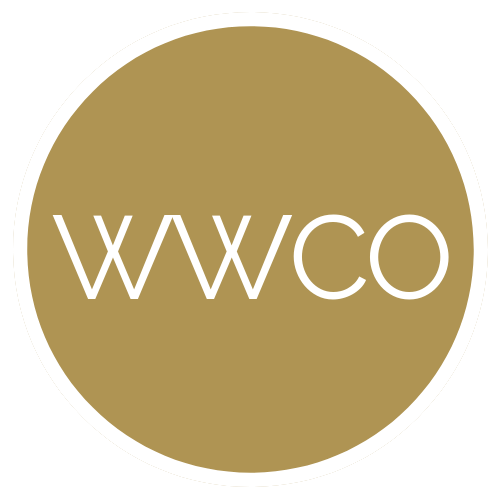
Entrepreneurship is on the rise—particularly female entrepreneurship.
As of 2017, more than 1 in 4 U.S. businesses are women-owned and operated and approximately 1,000 new women-owned businesses are founded everyday –up more than 50-percent over the past 20 years.
In short: We are in the midst of the “Golden Age for women entrepreneurs.”
While many stories of the gender gap closure and boom of entrepreneurship have been told however, there is one story that has not—
The story that has helped fuel the boom of this current female entrepreneurial “Golden Age” in the first place—specifically, the story of the women behind the movement.
They call it “Women Who Cowork”
Every boom has a tipping point—the slight edge that sets that boom into motion, and for female entrepreneurial growth, Women Who Cowork is it.
Women Who Cowork is a growing group of female entrepreneurs, who have created more opportunity and inspiration for other women business owners worldwide, by opening the doors to co-working spaces within their local communities.
For reference, “coworking” refers to the art of work conducted at a freelance office space, where business start-ups, visionaries, professionals, creatives, and non-profits alike gather independently to conduct their atypical 9 to 5 workdays.
There is strength in numbers—especially when women are involved—and as coworking spaces have continued to evolve (doubling in the amount of new spaces each year since 2005), it’s no wonder we’ve witnessed a closing in the gender gap as well.
Coworking space founder, Ashley Proctor, is one of those women leading the way, as founder of one of the first female-owned coworking spaces, X-Factor, in Canada back in 2003.
Since then, Proctor has locked arms with others, like Laura Shook Guzman (Soma Vida, 2008), Iris Kavanagh (2009) and upwards of 200 other women coworking space owners who say they are not stopping any time soon, as they plan to continue to help other women boss babes to be the change they wish to see in the world.
Women leaders are creating their own spaces, expressing their unique leadership styles and cultivating a community of those who share their vision. According to Laura Shook Guzman, an early adopter of coworking and co-founder of Women Who Cowork, “many women are discovering that coworking is a model designed to not only embrace a female leadership style, but one inspired by it. Quite frankly, it is a possible solution to reducing the gender disparity we face in today’s world of business.”
Here’s a timeline of where women were prior to the quiet Women Who Cowork movement and how far they’ve come since the evolution has begun. Let’s call it Herstory.
Herstory:
Monumental tipping points in the evolution of women-owned businesses and the modern day Women’s Coworking Movement in North America
Pre-1900’s— Women operated businesses were solely secondary sources of supplemental income, the avoidance poverty, the replacement of income from the loss of a spouse or in some cases, “shameful” businesses—such as the mid-18th century’s women-run brothels, alehouses, taverns, and retail shops.
Early 1900’s-A more progressive way of thinking, and the rise of feminism, female entrepreneurs began to be a widely accepted theme
1920’s- Women gain the right to vote
1929-Virginia Wolf writes about a woman’s need to experience a “room of her own”—hinting at entrepreneurship and the desire of women to be seen, heard and equalized; And Elizabeth Arden emerges on the scene as a cosmetics’ empire
1950’s Slow start of women-owned “home based business” for some women who felt pressure to be domestic and primarily mothers. For instance, Lillian Vernon started her own catalog wedding business while pregnant with her first child, Mary Crowley founded Home Decorating and Interiors, and Bette Nesmith, created the product “Mistake Out”—a version of white out.
1960’s-Early 80’s—Many women hit the traditional workforce as the rates of divorce skyrocket and they are forced to become their own breadwinners. During this time, approximately only 4% of businesses were women-owned, such as: Mary Kay, Barbie (Ruth Handler), The Body Shop and Mrs. Field’s Vera Bradley, Oprah Winfrey and Martha Stewart.
1988- Congress passes the Women’s Business Ownership Act ending discrimination in lending and striking down laws that required married women to acquire their husband’s signature for all loans.
1989- Susan Engeleiter appointed as as head of the US government’s Small Business Administration
1990’s- Technology and online boom begins encouraging more women to be key players in business and boosts women’s access into business.
1993- “Take Our Daughters To Work Day” is popularized nationally to support career exploration for girls and foster a spirit of women’s rights in the workplace (it was later expanded to Take Our Daughters and Sons to Work Day)
2000- The turn of the century marks an upward trend in women-owned and operated businesses
2003- Ashley Proctor, launches the first-women-owned Xspace in Toronto, Canada and later Creative Blueprint (2006) and The Foundery (2011)
2006 – Tara Hunt becomes the first woman to c0-found a coworking space in the US, Citizen Space in San Fransisco, CA.
2007 – More women step to the front of the coworking movement when Minna Vann launches Network Hub in Vancouver, BC and Susan Dorsch co-founds Office Nomads in Seattle, WA
2007 – Female-founders, Adelaide Lancaster and Amy Abrams, open the first coworking space, In Good Company in Manhattan, NY, designed specifically for women entrepreneurs
2008-Women Who Cowork co-founder, Laura Shook Guzman, founds the first coworking community in Austin, Texas (one of the main “start up capitals of the U.S.”) with the mission to create a space for “heart centered entrepreneurs” with a focus on health and wellness
2008- Marissa Feinburg and Jennie Nevin launch Green Spaces, the nation’s first green coworking space originally founded in Brooklyn, NY, now headquartered in Denver
2008- Felicity Chapman founds Cubes & Crayons, the first coworking space with the integration of on-site childcare
2008- Khristina Horn is a founding investor and member of the BOD for NextSpace, the first coworking space to offer offices as part of the business model
2009- The Economic Downturn (recession) slows women entrepreneurial growth for a short time period, before accelerating back up on an upward trend to modern day.
2010- Cambell McKellar launches LooseCubes, the first coworking space directory and listing site, raising $1.23 million in seed funding.
2011- Women-only co-working space Hera Hub opens by Felena Hanson (and becomes the first women-only coworking space to open multiple locations in the U.S.)
2011 – Coworking thought-leaders, Iris Kavanagh and Liz Elam, help form the first coworking alliance, League of Extraordinary Coworking Spaces (LExC)
2012 – Liz Elam, founder of Link Coworking in Austin, TX, launches and produces the Global Coworking Unconference Conference (GCUC), which has now become the largest Coworking Conference network in the world.
2012 – Jaime Russo launches Enerspace Palo Alto and becomes the first person to create a successful bridge between the shared space/executive suites and the emerging coworking model
2012- The U.S. reports a spike in minority (Hispanic and black) women-owned businesses
2013- Sheryl Sandberg releases her book Lean In inspiring women to change the conversation from what women can’t do to what they can do, and a rallying cry for us to work together to create a more equal world.
2016-There are an estimated 11.3 million women-owned businesses in the United States — a 45% increase since 2007
2016-Women Who Cowork launches on International Coworking Day, August 9, 2016 with the publication of The Global Directory of Women Owned Coworking Spaces
2017-Women Who Cowork host their first “meet-up” during GCUC NYC
2017- Entrepreneur Magazine recognizes the Women Who Cowork Movement, for “harnessing community, inspiration and success”
The number of women founders and co-founders continue to rise and as of August 2017, we have well over 100 coworking spaces, world-wide, with women leaders at the helm. You can learn more about these spaces in The Global Directory of Women-Owned Coworking Spaces.
And, if we were to travel back to 1929, when Virginia Woolf wrote of a woman’s need to experience a “room of her own”, one can wonder if she could have imagined the magnitude of this desire for the 21st century woman. For now, not only have women declared a room of their own, they have gone on to create multiple rooms and spaces for other women to do their work, to share their passions and to fulfill their purpose.
Well done, Ladies.
